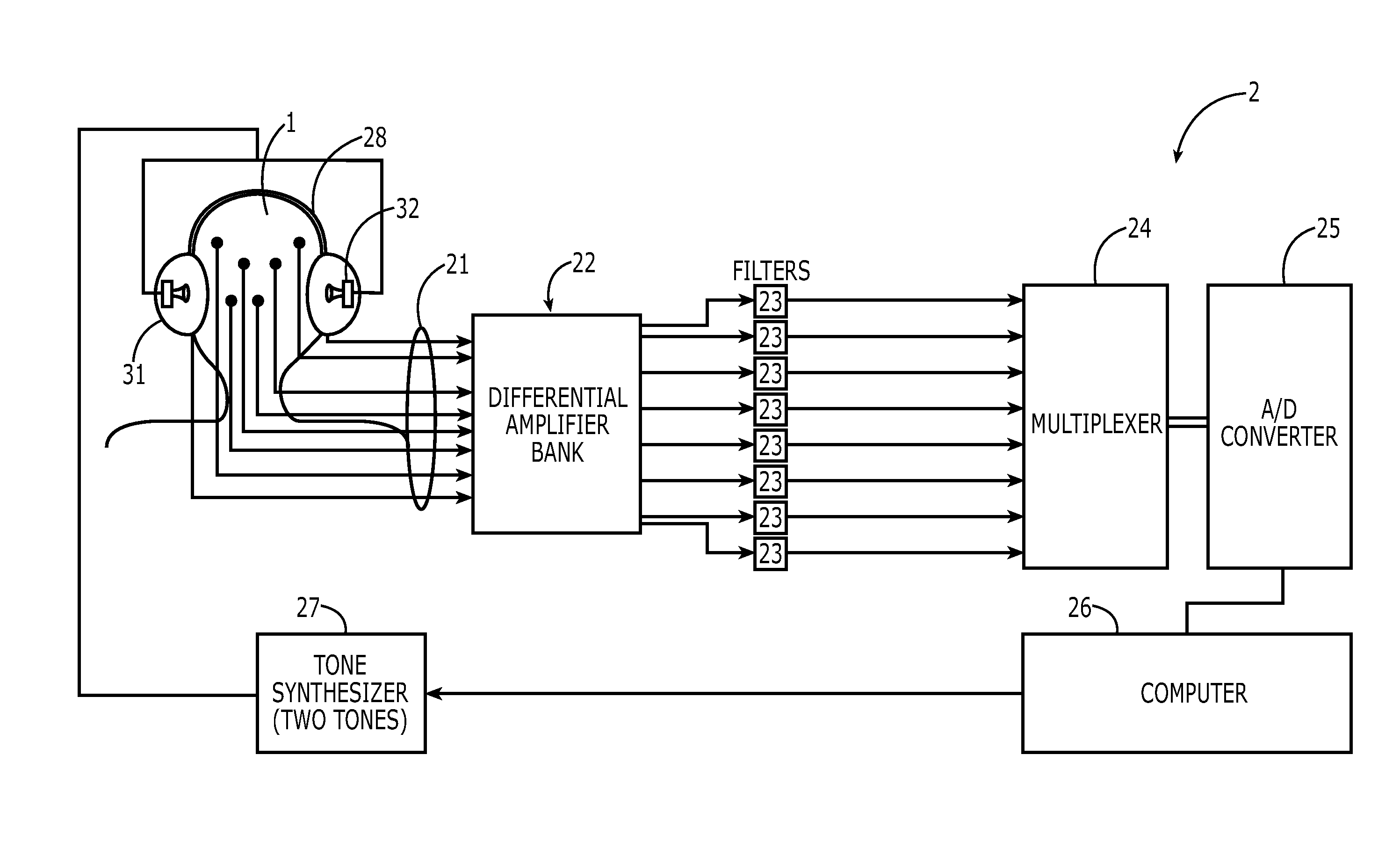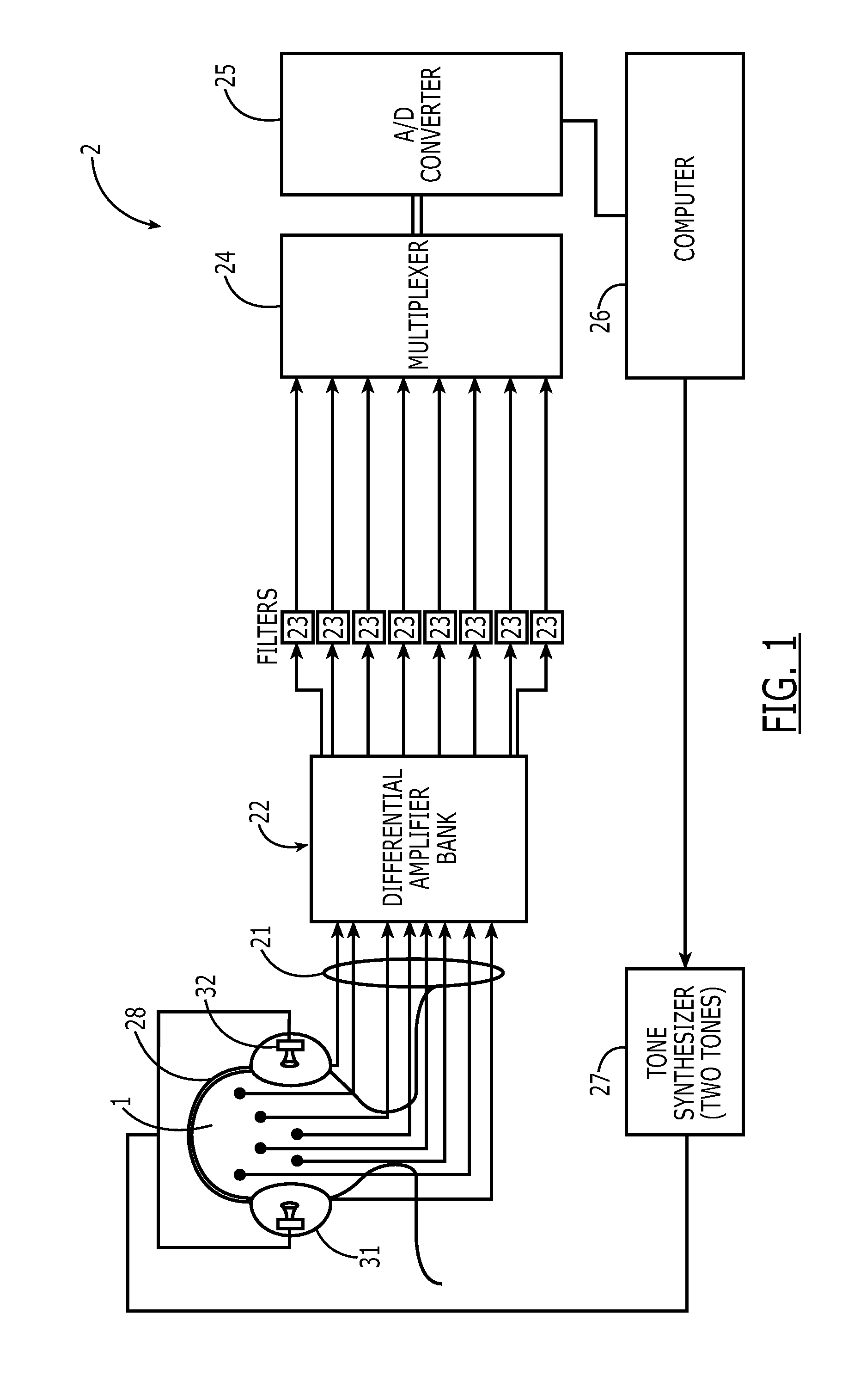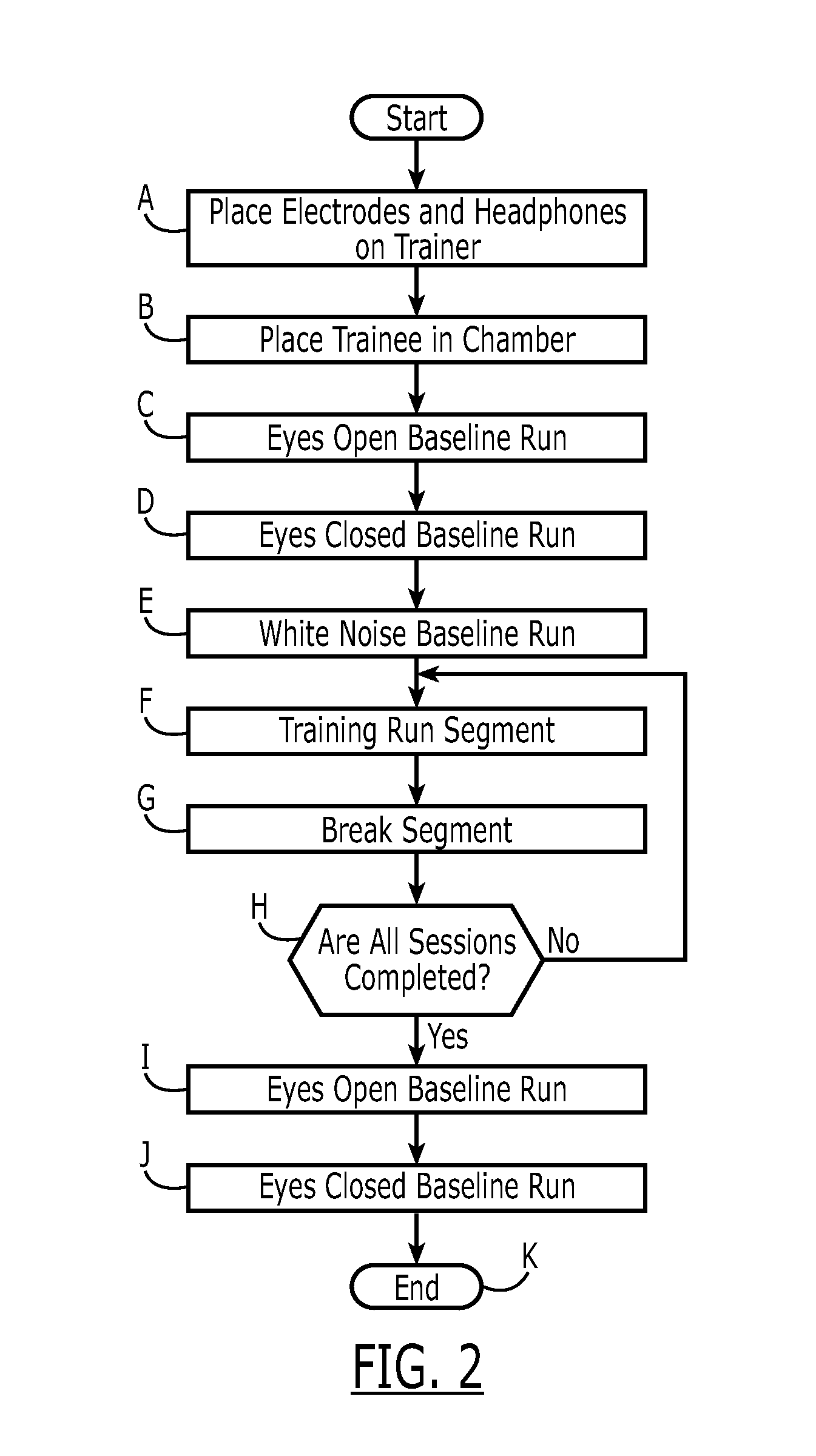[0005]A primary benefit of the invention is that it facilitates learning self-control of one's own EEG activity through EEG biofeedback and by binaural-beat enhanced EEG biofeedback. It thus helps and enables trainees to learn control over their mental and emotional and spiritual subjective states and their underlying physiological states of their brain activity. The goal of such self-control is not confined to obtaining control of the measurable EEG parameters, but goes well beyond that to obtaining self-control of the mental and emotional and spiritual subjective states associated with the objectively measurable EEG sub-bands and sub-ranges.
[0007]This EEG biofeedback system comprises either one or a pair of reference electrodes, a suitable ground electrode, and a plurality (number=N) of active cortical site electrodes that are placed on the head of a trainee (or client or Subject) with output signals directed to an equal number (N) of EEG amplifiers. The output of each of the active cortical site electrodes is filtered into sub-bands or sub-ranges of the EEG. The filtered signals can be converted into aural, visual, or tactile response indicia and supplied in real time to the trainee to allow the trainee to respond instantaneously to biofeedback signals. The system contemplates that at least 16 frequency sub-bands may be established: (1) slow delta, (2) fast delta, (3) broad band delta, (4)slow theta, (5) fast theta, (6) broad band theta, (7) slow alpha, (8) middle alpha, (9) fast alpha, (10) broad band alpha, (11) slow beta, (12) fast beta, (13) broad band beta, (14) slow gamma, (15) fast gamma, (16) broad band gamma. Frequency-domain filtering is accurately effected by the system with minimal delay and with great accuracy and precision, and additional narrower filter bands can be established to give finer resolution in the frequency domain. It is also possible to do Fast Fourier Transforms (FFTs) with very fine frequency resolution to give information on precisely which frequency within a band of interest (delta, theta, alpha, beta, or gamma) has the peak amplitude or peak energy at any given moment of time.
[0009]The process of binaural beat EEG entrainment occurs when two carrier tones of nearly identical frequencies are presented, one to each ear, and the brain detects a frequency difference between these two tones. When the two carrier tones are fed to a person via stereo headphones (or less ideally speakers very close to each ear), the brain will process the two signals and produce the sensation of a third sound called a binaural beat, which has a frequency equal to the difference in frequency between the two carrier tones. For example, a 300 Hz tone in one ear and a 310 Hz tone in the other ear produces a binaural beat at 10 Hz. Binaural beats can be detected by humans when the carrier tones are below approximately 1,000 cycles per second and can be readily generated at the low frequencies characteristic of the EEG spectrum (e.g.; less than 100 cycles per second).
[0012]This process of binaural-beat-augmented EEG feedback could be done on just one of the EEG channels (and thus just one of one set of the head sites) of the EEG feedback process and that channel could be the channel with the greatest amplitude or the lowest amplitude or any other channel or combinations of channels of interest. The process could also be done on a plurality of channels simultaneously, since the EEG biofeedback system can function using multiple independent channels simultaneously. The EEG biofeedback system can also be productively used to boost the weakest one or two channels of a multi-channel montage. When used in this manner, strategies of training can be selected that are related to the initial ranking of the amplitudes of each channel and thus facilitate emphasis on working with the channels having largest or the smallest amplitude. However, the present invention would also make it possible to select intermediate channels based on predetermined parameters such as rate of brain wave amplitude and / or frequency fluctuation, and the like. Note that while the EEG biofeedback system encompasses the ability to simultaneously monitor and to provide EEG feedback on multiple channels, the binaural beat augmentation contemplated by this improvement could also be used in a single channel device and that this invention encompasses both single-channel and multiple channel embodiments.
[0015]It should also be noted that the signals used to determine the tones that are used to produce the audio feedback of the BEG activity can also be processed electronically to provide feedback in forms in addition to audio. For example, the signals could be processed to produce a visual stimulus or graphic reflecting the biofeedback or to produce a tactile output through means such as a vibration device. Such variations could be used alone or in conjunction with the audio feedback tones to motivate and accelerate learning of EEG self-regulation and self-control.
 Login to View More
Login to View More  Login to View More
Login to View More 


